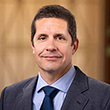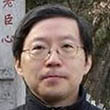Was China's Housing Boom a Bubble?
Abstract
This article investigates the factors influencing nationwide and city-level house price trends in China during the 2000s and early 2010s, considering the country’s significant structural transformation and urbanization. The analysis reveals that "fundamental forces" effectively explain house price appreciation at the national level and in most cities, with Beijing and Shanghai being notable exceptions. Income growth is the primary driver of rising house prices, while population growth also plays a significant role. However, in many cases, the impact of population growth on house prices is mitigated by an accompanying increase in land supply. China’s unique housing market landscape, particularly "hukou" migration restrictions, shapes house price dynamics and the responsiveness of migration to income growth, thereby amplifying the impact on house price appreciation.
Introduction
Since initiating a process of market-oriented reforms in 1978, China has grown into the world’s largest provider of factory production. The country’s annual economic growth rate over the past 30 years has averaged 8 percent—one of the highest rates in the world. Along with this high growth, China has undergone rapid structural transformation as economic activity shifts away from agriculture and toward manufacturing and services. Its urban centers have also witnessed large house price booms since the turn of the millennium. While significant, China’s urbanization has not matched its structural transformation given that more than half of the population still lives in rural areas.
These patterns raise the natural question: Was the housing boom in China during the 2000s and early 2010s a bubble? Are fundamental economic factors insufficient to explain the rapid increase in house prices?
Citation
Carlos Garriga, Aaron Hedlund, Yang Tang and Ping Wang,
ldquoWas China's Housing Boom a Bubble?,rdquo
Federal Reserve Bank of St. Louis
Review,
Fourth Quarter 2024, Vol. 106, No. 14, pp. 1-15.
https://doi.org/10.20955/r.2024.14
Editors in Chief
Michael Owyang and Juan Sanchez
This journal of scholarly research delves into monetary policy, macroeconomics, and more. Views expressed are not necessarily those of the St. Louis Fed or Federal Reserve System. View the full archive (pre-2018).
Email Us




